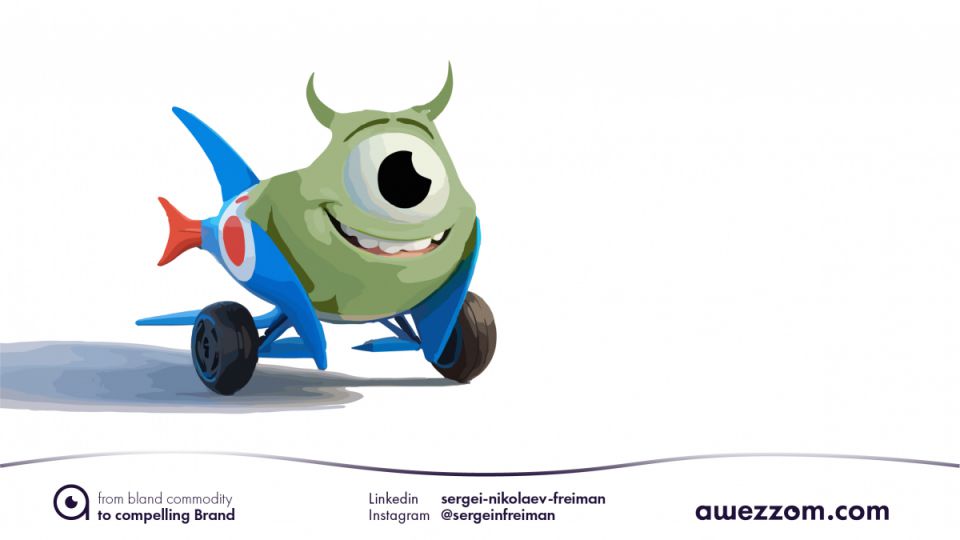In the workplace, top management and line managers expect and often demand high productivity from their subordinates. Everyone is expected to live up to the last year’s standards set by top performers: “If Jane can do it, why can’t you?” Professionals who aren’t performing on par are considered lazy and unmotivated. Ripe for the next round of carrots and sticks.
Let’s examine the issue with productivity.
Three tiers of productivity in the workplace
To simplify, let us assume there are just three tiers of professional productivity: Rockets, Steady Eddies, and Laggards. Top performers are Rockets. Their productivity is off the charts. Top tier. At the bottom tier, Laggards are professionals with dismal productivity. One might even be tempted to compare them with chimps capable of outperforming the Laggards with one arm tied behind the back. The middle tier is typically the broadest strata of all — the domain of Steady Eddies. These professionals comprise the core of the firm, and is a crucial element in firm’s sustainability.
Typically, there is a normal distribution across these tiers: 5-20% Laggards, 60-90% Steady Eddies, and 5-10% Rockets. Too many Laggards, and the firm will go bust. Rockets are hard to come by. Hence, Steady Eddies should be your (managerial) focal point.
Steady Eddies are the apple of your eye
Now, the Rockets become Rockets in two ways. First, some of these professionals are high in trait Conscientousness, particularly in one of its aspects — Industriousness. They can’t help not being industrious.
They were either born that way or somehow (no one knows how) developed this trait. Regardless, the proclivities to work hard a lot, not waste time, carry out plans, stay focused, get tings done quickly, and make progress are natural to these people. If you’re using DiSC assessment at your firm, these first-type Rockets are likely to be CD types.
Second, if they aren’t industrious, these professionals have learned the micro routines that closely resemble natural tendencies of industrious people. And what’s more important, initially through commitment and resolve, and later through sheer repetitive practice, they’ve habituated these routines.
Regardless of what your spiritual coach may say, you cannot outgrow Shaq
As a manager, or a professional for that matter, you cannot create more first-type Rockets, or become one yourself. If you’re 5’9’’ and you’re 35, you don’t expect to outgrow Shaquille O’Neal next year (or ever). Regardless of your mindset, or voodoo, or latest hacks, or what that euphoric motivational speaker told everyone the other day.
However, you can learn the second-type Rockets’ techniques and apply them to Steady Eddies.
Behavioral and personality assessments of professionals
The first step to take — as always — is to take stock of things. Identify how many Rockets, Steady Eddies, and Laggards you currently work with. You want to have a snapshot of the landscape. For that, you need to conduct personality and behavioral assessments of your professionals. Tools like Predictive Index, DiSC, Big 5 OCEAN model, and Understand Myself are common instruments.
The assessments are rather affordable: ranging from $10 to $100 per person. However, interpretation is key. And that would be the first reason to hire an outside expert, a consultant (like myself) to help you make sense of things. Perhaps, someone at your HR department is experienced with these assessment tools, and knows how they overlap to produce a complete picture. Ask around. But please don’t buy into HR’s mantra of “everyone can achieve great things” unquestionably. It’s a half-truth triggered by excessive compassion.
Existence of meaningful personal goals won’t show up on test reports
You are likely to discover that your high-performing Rockets are high in trait Industriousness. Laggards are likely to be very low in this trait. There will be other traits reported, too. Look for patterns. Perhaps, there is a combination of traits that makes Rockets particularly effective at your firm.
In addition, most likely your Rockets have another vital characteristic that wouldn’t show up on the tests — clear, meaningful personal goals tied to the proclivity to be (act) industrious. To uncover this, you’d need to conduct one-on-one interviews with these professionals. Interviews have to be informal, conversational. The second reason to hire a consultant.
Group your performers into 3-5 tiers and compare assessment reports per group. Group distinctions have to be vivid. Analyze what combination of traits and behavioral tendencies differentiate your professionals.
Do not help Laggards
Despite the burning desire to help Laggards, don’t. Use assessment tools on yourself, too. Most likely, if you’re high in trait Agreeableness and you’re a Si-type (per DiSC), you’d have that desire to help the poor bastards. Resist that.
Focus your efforts on helping Steady Eddies become more productive. Quick wins always create ripple effects that can positively affect Laggards as well. However, note that some Laggards are beyond help.
Making productivity interventions at workplace
How do you practically go about helping your Steady Eddies? Gather them in an auditorium that radiates an idea: we have assembled here to have an open conversation. So, no podiums, no classic classroom layouts, no chairs screwed to the floor. Also, no edicts, no because I said so, no for the greater good stuff, etc. Make sure folks believe everyone is there to discuss what management has discovered might help professionals, should they want it.
Report on your findings in general terms. Ask professionals whether they’d like to have a Rocket (or two) share their micro routines during the next meeting. Announce dates when managers will be available for 1-on-1 conversations to discuss specific routines that may be of help. Offer people to sign up now and later online.
Told ya it’ll work, you dimwits
Make this voluntary. This will allow you to focus on those who are already interested, change-ready, and thus increase probability of early wins. Spread the word about those early successes at lunchtimes and water coolers. But don’t make it a: “Ha, told ya it’ll work, you dimwits”. Don’t rub it in for slowpokes. It’s normal to be cautious of managerial innovations. You can have a pompous celebration later when at least a third of Steady Eddies have already achieved success so no one can argue it’s accidental.
It may be the case that at your firm professionals will be more open-minded about discussing their work routines with an outsider rather than their supervisor. That’s the third reason to consider hiring a consultant. The purpose of such intervention is to make change happen. Therefore, you want authenticity, not a performative act on anyone’s part.
Ensuring commitment among professionals
During 1-on-1 conversations, manager’s or consultant’s role is to help professionals identify which micro routines they’d want to adopt, will be capable of implementing, and will have the necessary commitment to act out. This is tricky business. One of the ways to increase the probability of adoption rests with goal setting.Revert to the Stone Age of carrots and sticks
Because most of us have that lurking thought: why do anything at all when I can just sit there and do nothing, it is vital to help professionals discover how those new micro routines will tie with their personal interests and goals. After all, if a professional really subscribes to an idea that work isn’t a wolf — it won’t hide in the woods, there’s little managers can do other than revert to the Stone Age of carrots and sticks.
The antidote to cynicism is meaningful goals. Meaningful and valuable to the professional, not the manager or the firm. Commitment to new routines will only follow the existence of these five factors:
- rationally valid arguments in favor of adoption,
- feeling of social appreciation,
- ongoing supervisor support aimed at boosting enthusiasm and confidence,
- observations of personal advancement which is experienced by acting routines out, and
- a valued goal.
In some cases, there is also a sixth factor: satisfaction of professional curiosity. (This is related to the subject of goal facilitators I’ve written in another article.)
To put this differently, commitment is created when the professional believes the following. “I understand these new habits are good for me. I possess the means to carry them out. When I’m implementing these routines, I don’t feel terrible, and sometimes I even feel good the process. People around me seem to like me more when I’m involved in these activities. Everyone is rooting for me. Heck, I think I feel better about myself, too. Oh, and I can really see how these routines help my progression toward personal goals.”
Babysitting professionals at work
If you’re the kind of manager who is high in trait Conscientiousness and perhaps Industriousness as well, your visceral reaction to all this stuff may be: “I’m not here to babysit anyone. These are grown-ups — for crying out loud — they should get their act together and strive for excellence themselves.”
However, the issue here is quite extraordinary. You see, because personality traits differ — and many scientists converge that the differences are, in fact, biological — professionals technically see the world differently. In other words, the same set of facts will be interpreted or perceived differently by people with different personality traits.
The way (e.g.) yourself and Rockets may see the world may be quite different from how other professionals perceive it. Most of your firm’s Steady Eddies may be oblivious to concepts that are natural and self-evident to Rockets. And vice versa. So much so that Rockets (e.g.) would consider talking about the obvious stuff — their micro routines — pointless.
Unless someone (you or me) explains it is not. Therefore, your initial role is to introduce professionals to best practices of their high-performing peers while making sure Rockets understand it isn’t always arrogance, ignorance, or laziness that prevents their peers from leveling up their productivity stats.I'm not babysitting grown-ups, for crying out loud!
Working with your subordinates, you may also encounter scenarios where low performance would appear to have links to domains outside the work setting. In such a case, there is an option to offer subordinates separate goal-setting sessions for those other areas (e.g.) hobbies, social citizenship, personal development. The emphasis of such sessions would be on weaving professional’s work performance with their personal goals outside the career and financial domains.
This may be the forth reason to hire consultant externally. Because many a time professionals may be uncomfortable with disclosing contents of their personal non-work aspirations to their superiors. Which is quite understandable.
The awezzom question of the day:
How can we elevate our Steady Eddies’ performance closer to most productive Rockets?

